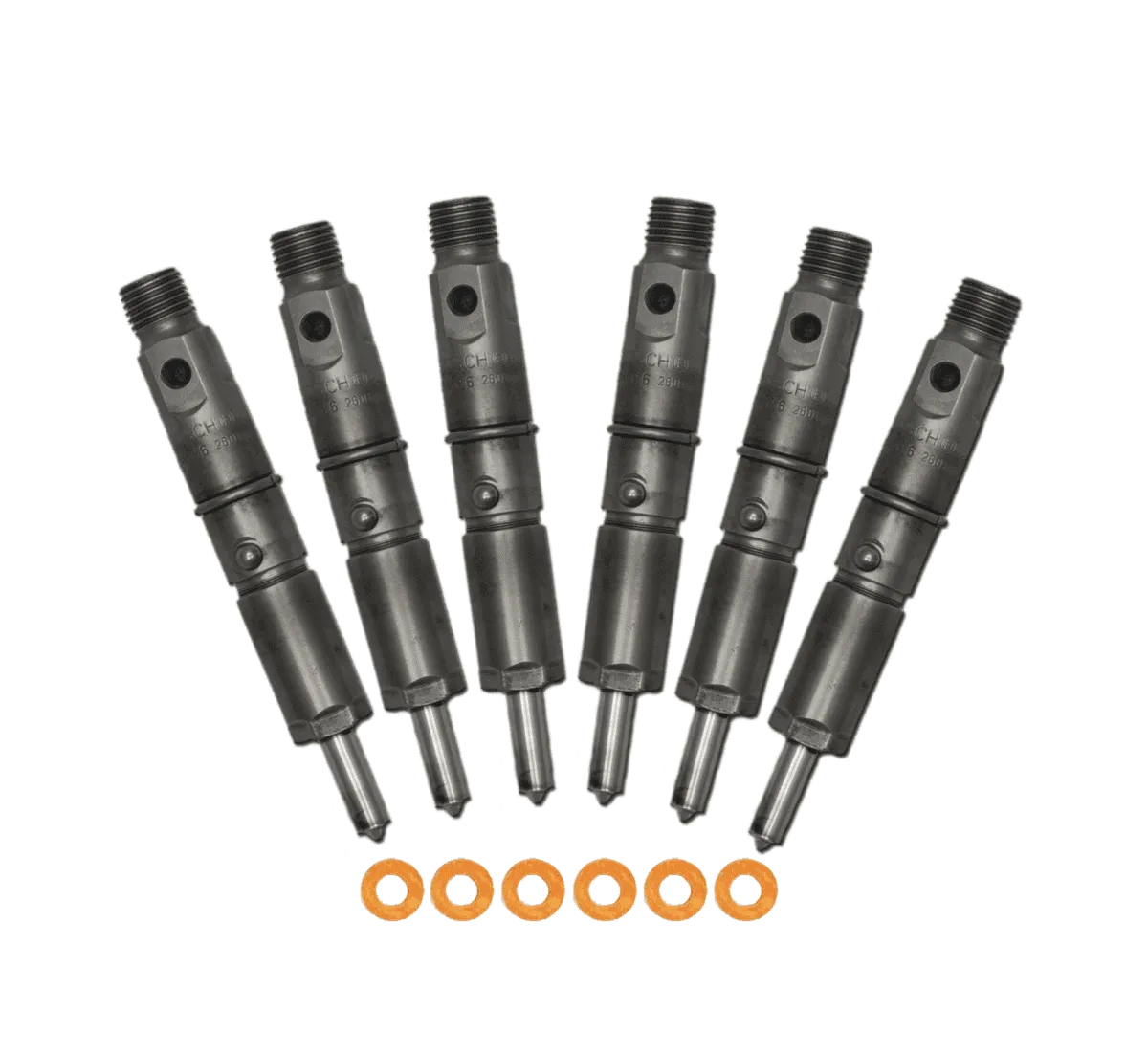Budget Builder 2nd Gen Injector Sets for 94-98 12v Cummins
From $560.00
- Budget Builder 2nd Gen Injector Sets for 94-98 12v Cummins (60000000061)
Features:
- Varied nozzle sizes
- SAC or VCO-style nozzle
- 145-148-degree spray angle
- Set of 6 injectors
- Includes injector installation kit
This product cannot ship to California
Budget Builder 2nd Gen 12v Injector Sets are built, tested, and calibrated to exacting standards at our shop in Utah, ensuring high quality and consistent performance before they go out the door. Whether your second-gen Cummins is a daily driver, work truck, or dedicated competition vehicle, our injectors have proven themselves. Each set of second-gen injectors comes with new sealing washers, or a complete installation kit is optional as well. Power Driven Diesel 2nd Gen 12v Injector Sets are a cost-effective upgrade to your OEM stock injectors.
Would you like to know more? Our tech support staff frequently receives these common questions about injectors:
What’s the difference between 5-hole, 6-hole, and 7-hole injectors?
For a given flow amount, an injector with a smaller number of holes and a larger hole size will develop a more powerful jet of fuel, which will penetrate deeper into the piston bowl. This means the fuel jet will have some resistance to ignition until it is farther into the bowl. Conversely, an injector of the same flow amount, but with a larger number of holes and smaller hole size will produce a finer spray of fuel, which doesn’t penetrate as far into the bowl but ignites more readily. The amount of bowl penetration that is ideal depends on the rpm and boost level of the application.
At low rpm, the 7-hole nozzle atomizes the fuel into the charge air better, which results in increased burn efficiency. However, there is a crossover point around 2,000 rpm where the deeper penetration of the 5-hole injector is required to maintain burn efficiency at higher levels of boost and rpm, as the charge air conditions in the bowl become increasingly dense and turbulent. While apparent, these differences between 5 and 7-holes are minimal until 3,000 rpm. Overall, the 5-hole style injector is by far the most common and is the best choice for most 12v applications. 7-hole injectors may perform better on lightly loaded trucks running at lower rpm.
Which is better, SAC or VCO nozzles?
For the best explanation and demonstration of nozzle types, check out the video above!
What is the spray angle, and which one is right for me?
The spray angle, or spray pattern, is another variable in the injector equation. This refers to the built-in cone angle of the injector nozzle itself. Normally, the injector spray angle and piston bowls should be matched for optimal performance. Generally, second-gen 12v trucks with stock pistons will run best with a 145-degree spray angle. When mixing and matching spray angles and piston bowls, one must be careful. Putting 155-degree injectors in an engine with 145-degree pistons will result in high EGTs and a very hazy, smokey exhaust due to the fuel spraying outside the bowl. The notorious marine 370 hp injectors used in days past had a 155-degree spray pattern and gave performance injectors a bad name for a long time. On the other hand, we have had good results running 145-degree injectors in 155-degree piston bowls. This is especially apparent on builds with high injection timing.
Today, we offer a wide assortment of performance injectors and nozzles with spray angles tailored to your application.
These injectors are remanufactured with customer cores—they may have dings and dents but will perform as intended.
These injectors will not ship without the core fee paid. A return label will be provided in your package if selected. This is recommended for your convenience.
Compatible with:
- 1994 Dodge 5.9L 12v Cummins
- 1995 Dodge 5.9L 12v Cummins
- 1996 Dodge 5.9L 12v Cummins
- 1997 Dodge 5.9L 12v Cummins
- 1998 Dodge 5.9L 12v Cummins
*May not work for all builds due to other engine/vehicle modifications
Frequently bought with:
Diesel Engine Delivery Valves
Diesel Engine Delivery Valves
Diesel Engine Delivery Valves
1 review for Budget Builder 2nd Gen Injector Sets for 94-98 12v Cummins
Add a review Cancel reply
This site uses Akismet to reduce spam. Learn how your comment data is processed.

Rick Nelson (verified owner) –
Had a small shipping issue but customer service took care of it quickly. Core return was effortless. Any questions about what size was answered promptly Engine runs much better now with these new injectors, very satisfied